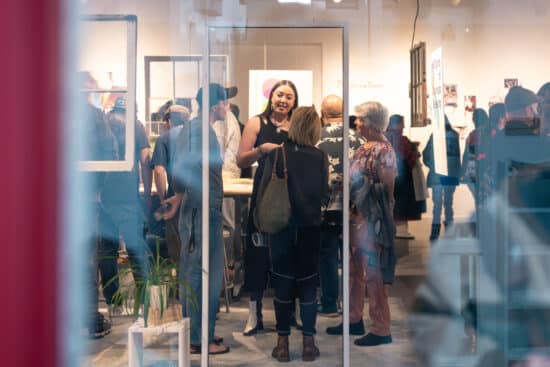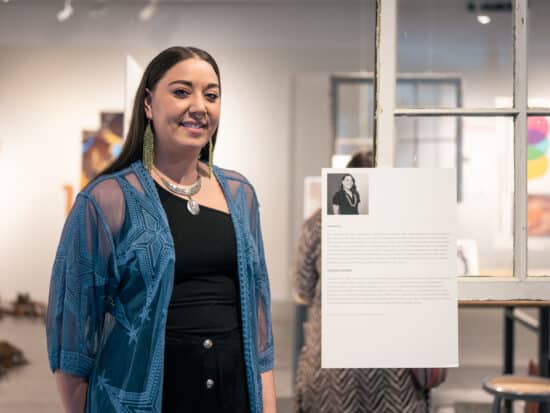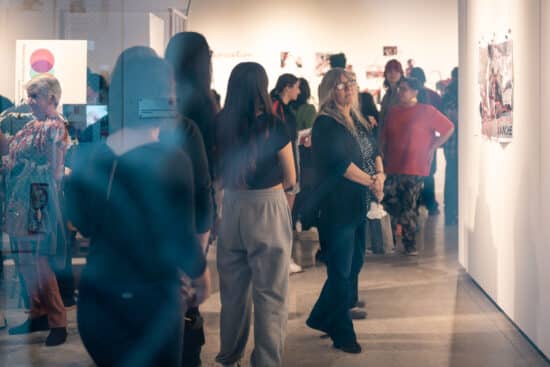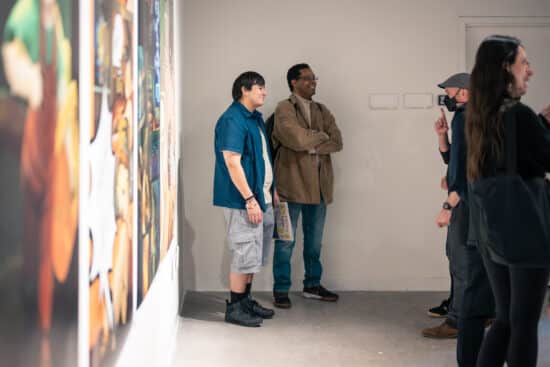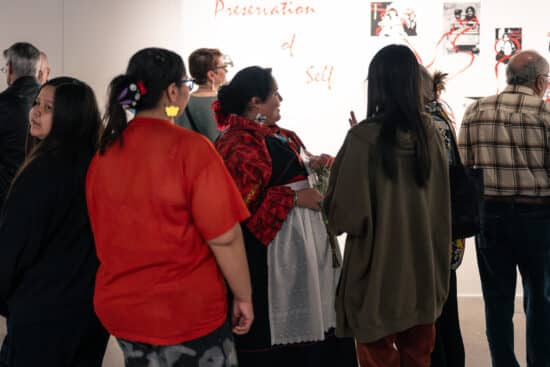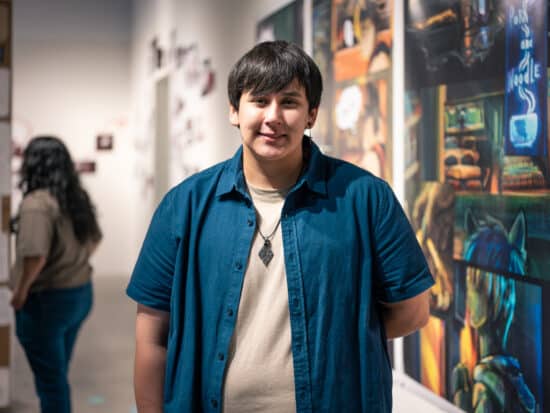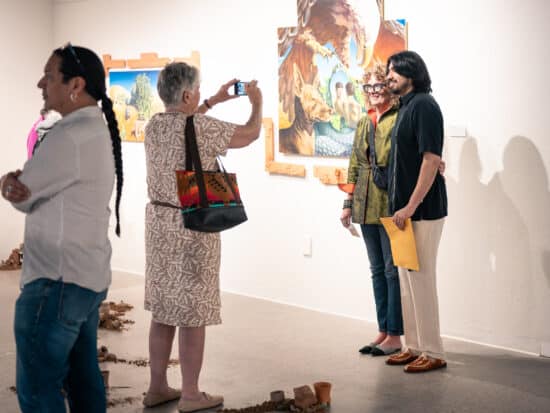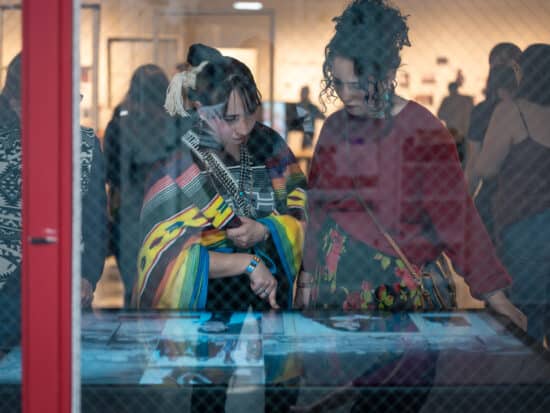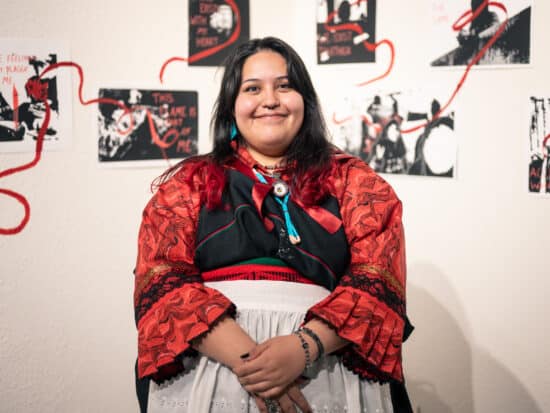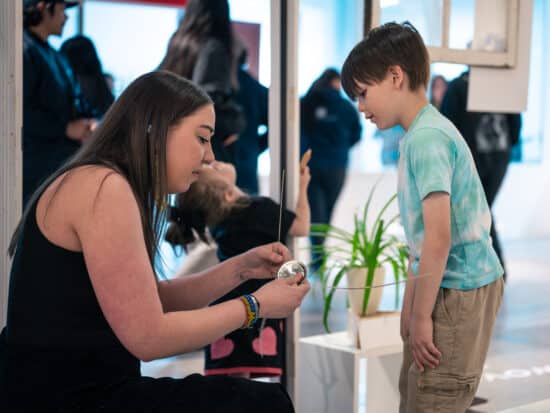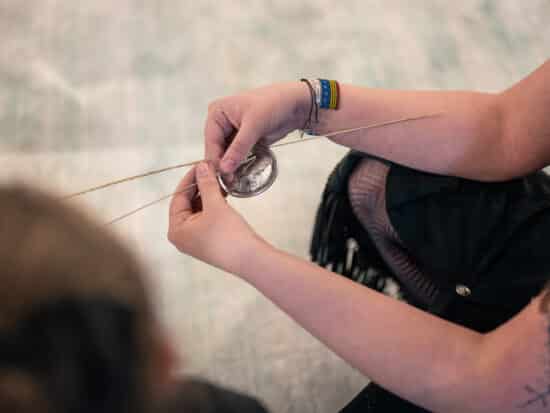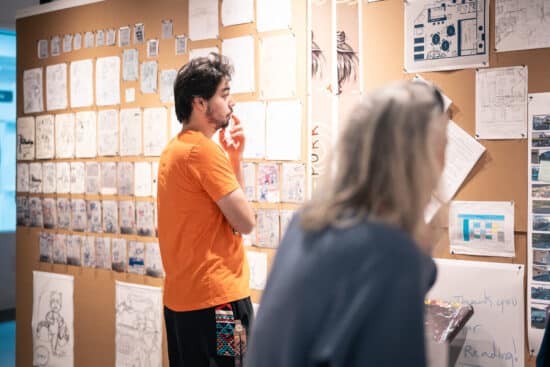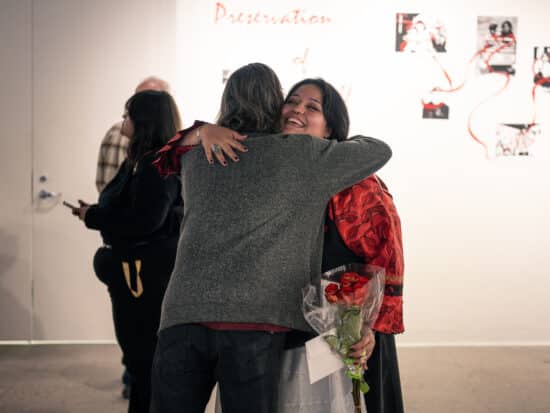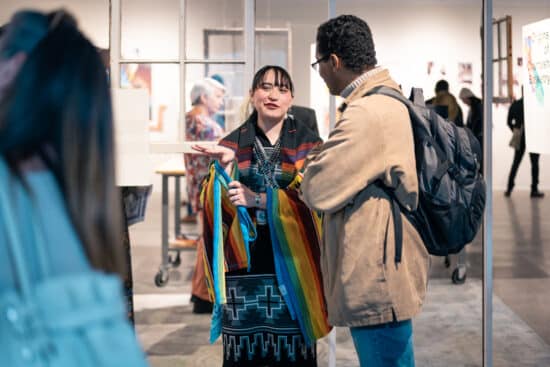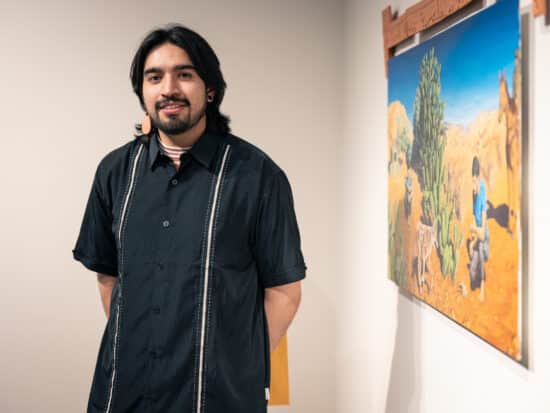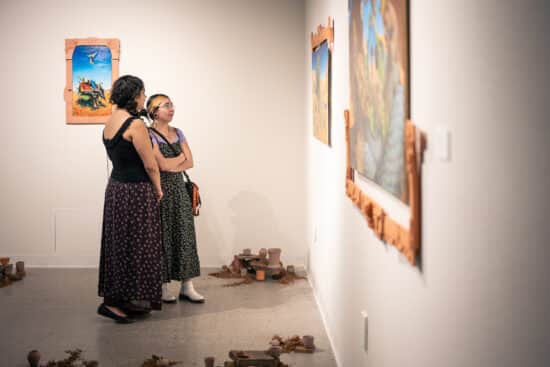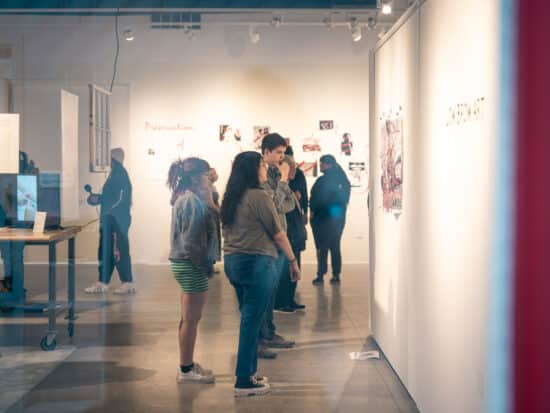Origins—A Creative, Emotional, and Intellectual Investigation
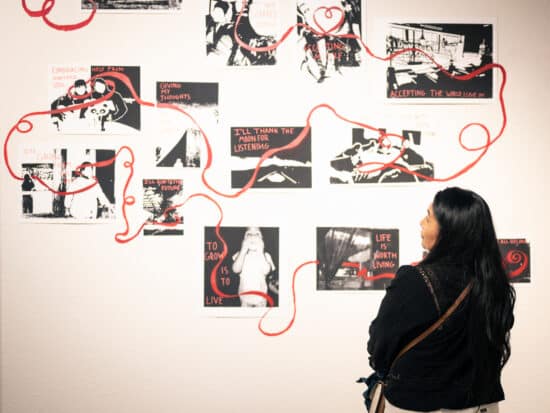
Preservation of Self by Sara Chama (Pueblo of Laguna)
Origins, the 2024 Spring Institute of American Indian Arts (IAIA) Graduating Senior Exhibition representing the culminating achievements of the Spring graduating BFA in Studio Arts and BFA in Museum Studies students, opened on Thursday, April 11, in the Balzer Contemporary Edge Gallery on the IAIA campus—the last day to see the exhibition is on May 10, 2024. Origins features the work of Jesus Miguel Avena (Mexican-American, Mexica, Mestizo, Chicano), Sara Chama (Pueblo of Laguna), Isabella Cox (Diné), Jaime T. Herrell (Cherokee Nation and European), and Jacob Tyndall (Umóⁿhoⁿ Tribe of Nebraska). Two of the graduates in Origins are Museum Studies students, while three are Studio Arts students. All present their work in a format that embraces installation, utilizing the gallery space to their creative advantage.
At the center of the Balzer Gallery is Museum Studies student Jaime T. Herrell’s Rewoven Roots, a “room” that suggests a curator’s workspace. In her curatorial statement, Herrell says, “‘Rewoven Roots’ offers an immersive journey into the enduring legacy of Chumash basketry, literally intertwining fibers of cultural heritage, artistic innovation, and environmental consciousness. Step into a methodic exploration of Chumash traditions, where historical narratives interconnect with contemporary perspectives, inviting viewers to contemplate the resilience of Indigenous knowledge and craftsmanship.” Three panels hang from the ceiling, delineating the space alongside window frames and a door frame. They are respectively titled “Origins of Chumash Basketry,” “Adapting to Modern Challenges and Environmental Stewardship,” and “Navigating Historical Currents and Cultural Resilience and Basketry.” On the large worktable are a variety of objects with accompanying text: a Chumash basket, a small case with coiled medallions and basketry starts from a coil basketry class at IAIA, basketry materials and tools, and a screen with a video demonstrating basketry-making. Magazines about Native basketry are arranged on a small table beside a chair, while on the lower shelf of the worktable are books relevant to the Indigenous museum professional.
With paw print decals on the floor, Studio Arts student Jacob Tyndall invites viewers into his Low Brow Art display, tucked in the right-hand side of the gallery entrance behind two walls. When turning the corner, the viewer is struck by an astounding array of process work pinned to the walls, from hand-drawn and digital sketches of character designs to drafts of the student’s developing comic book, Pork and Noodle, depicting anthropomorphic feline characters. A drawing table displays Tyndall’s bio, artist statement, and information about the works on display. As Tyndall explains in his project statement, “‘Pork and Noodle’ is a slice of life comic about two kits, ‘Noodle’ the main character and ‘Chashu’, who meet and bond over noodles with a strong and warm parental figure ‘Papa Kai” … The artwork displayed on the walls invoke a sense of ‘busyness’ and ‘clutter’ of an artists’ mind; what goes on behind the scenes that people do not see.” Opposite the process walls are four large-scale color prints of the digitally rendered comic book pages.
Preservation of Self by Studio Arts student Sara Chama deals with the artist’s processing of her physical and mental health experiences. A work by the same name features a ribbon-like painted red line crossing 50 black and white screen-printed photographs on the walls and an exit sign, connecting the prints in a continuous line. The placement of the prints, overlaid with writing, creates the impression of a dynamic graphic novel. The piece ends with the words, “Life is worth living//To life, we all belong.” Find Me in the Future, a digital print with border designs and four-layered photographic portraits in profile hangs on one wall. Avalanche touches on student concerns via a torn-and-sewed-together digital print. In her project statement, Chama says, “This project is meant to display my growth as a person and the changes that my mental health has taken over the 26 years I have been living on this earth. I use screen prints of people and places I’ve photographed to represent significant memories that played a role in my life.”
“Somos de la tierra (We are of the Earth) is a series of portraits and figurative paintings accented with ceramic frames that personify the internal dialogue of race, culture, and sexuality,” Studio Arts student Jesus Miguel Avena explains in his project statement. With consideration of his audience, Avena’s biography, artist statement, and project statement are provided in both Spanish and English. Somos de la Tierra (both the project title and the name of a work in the display)—disrupts the expected flow of a gallery by bringing elements of the outdoors inside. Ceramic cylinders, stone slabs, and “border soil” (as listed in the label) are on the floor, around which the viewer navigates to examine a series of four oil paintings with realistically painted yet supernatural or surreal subjects—Desenterrando plumas y huesos.; Tu puedes ser un coyote, mi hijo.; So otros colores, seya la media naranja.; and Maricon. These paintings are individually accompanied by three-dimensional ceramic pieces referencing Mesoamerican imagery and natural subject matter. Maricon. is additionally framed by a curtain embroidered with flowers and hummingbirds.
On the walls of the curatorial project Łįį’ Naashch’ąą (Art for the Horses) by Museum Studies student Isabella Cox, a herd of charming, thick-bodied horse graphics on the walls accompany text panels that discuss the significance of horses in Diné culture and art. The panels include “Łįį’ Naashch’ąą (Art for the Horses),” “Horse Trappings,” and “Diné Arts and Crafts,” in addition to the student’s bio and curatorial statement. In her curatorial statement, Cox says, “Łįį’ Naashch’ąą (Art For The Horses) explores the relationship of the Diné and horses throught their arts. Within Diné culture is a love and appreciation of horses. This exhibition seeks to shed light on the profound impact of horses in Diné cultural artistic expression.” Toward this end, a TV screen plays a video of Native people riding horses at a rodeo. A horse saddle is placed at the center of Łįį’ Naashch’ąą, along with a case of three playful works of art depicting horses, lent by the curators’ family. Against the title wall are two pedestals demonstrating additional Diné-created works depicting horses—a scarf and a necklace.
Be sure to immerse yourself in the creative, emotional, and intellectual investigations of our graduating Museum Studies and Studio Arts students!
